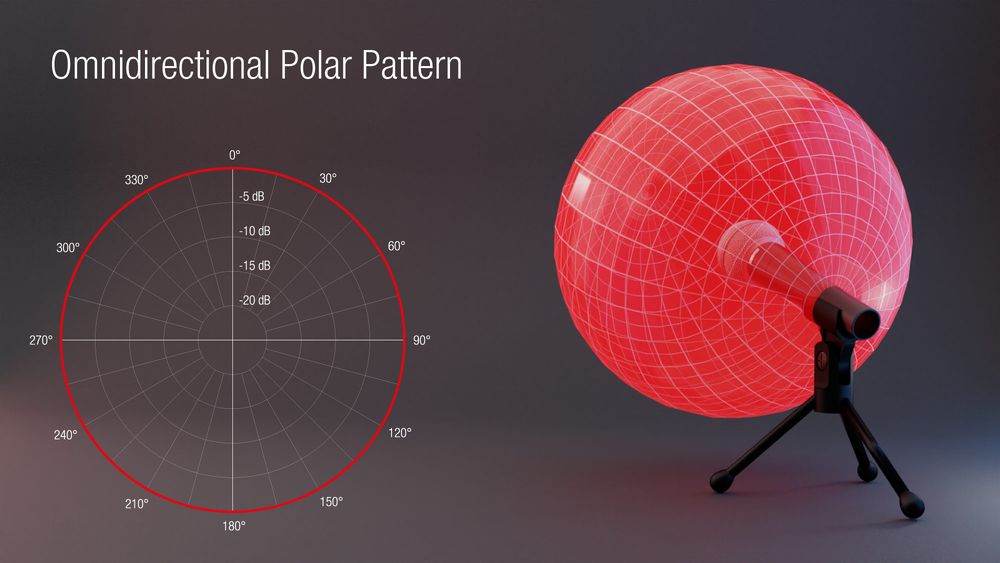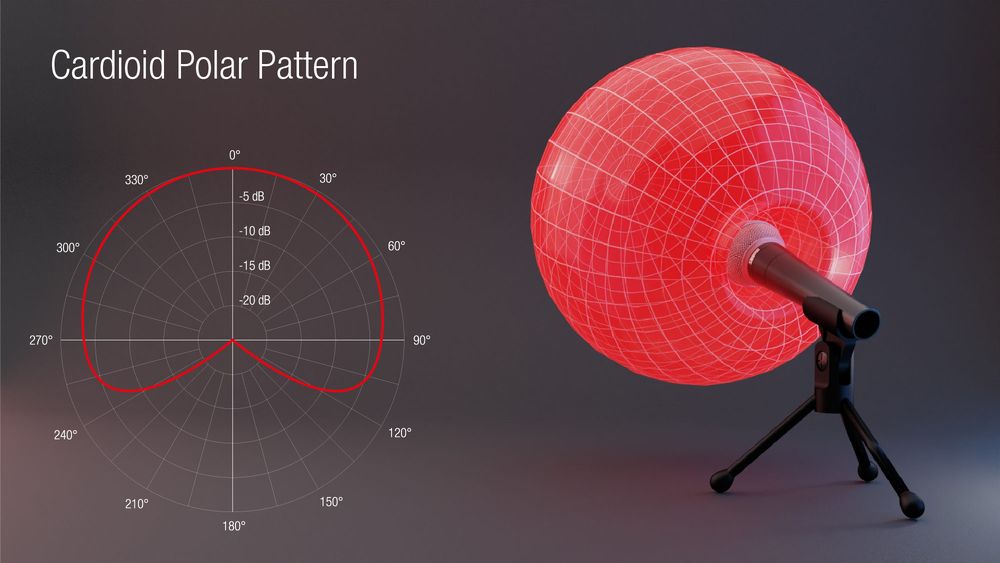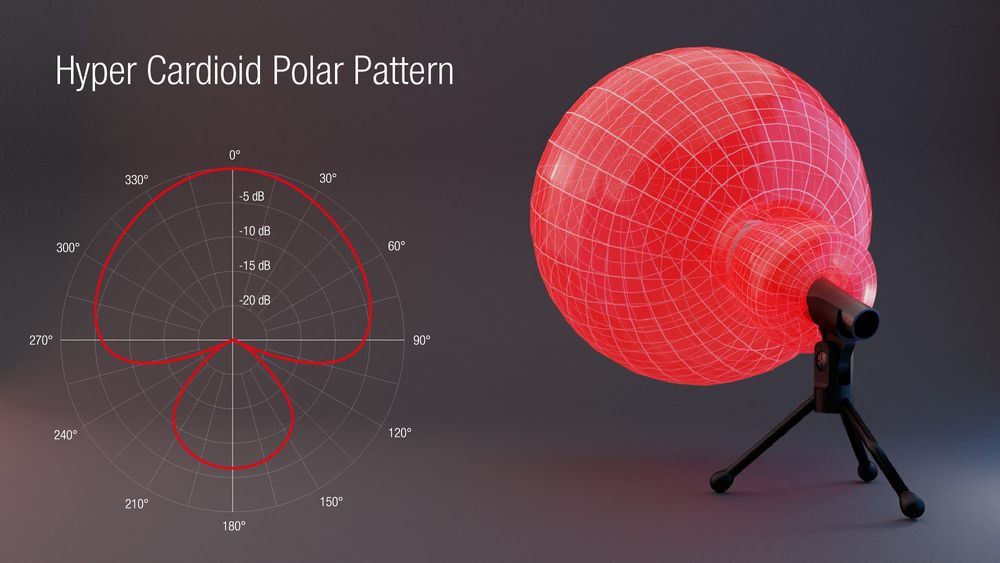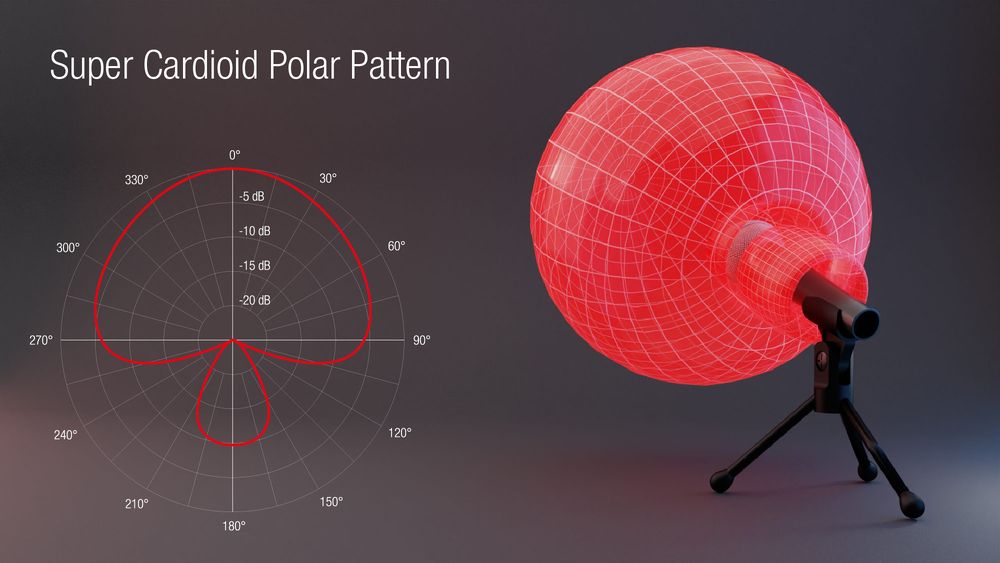5. Directional Characteristics
Not all microphones pick up sound in the same way - for instance some are designed to respond primarily to sound approaching from a single direction, while others pick up sound from both the front and rear, but not from the sides. These directional characteristics are known as a microphones polar or pickup pattern, and are an important consideration when choosing a vocal mic for stage together with the strategic placement of other band members and foldback speakers, the right polar pattern can substantially reduce spill and decrease the chances of feedback. Heres a look at the most common microphone patterns:
Omnidirectional
The response of a mic that has an omni pickup pattern remains more or less constant regardless of where the sound is coming from. These mics tend to be the most technically accurate and natural, but they may well also pick up sounds not intended for them. In the studio, they are often used as ambient mics, and although they can be handy in live situations where there is little or no time to sound check, their susceptibility to feedback and spill means they are seldom used in all but the most controlled live environments.
Cardioid
The cardioid pickup pattern (sometimes also called unidirectional) is so-named because its range of capture looks a lot like a heart shape. Cardioid mics pick up sound to varying degrees in front of the diaphragm, while rejecting sound from behind it. This type of pattern is usually created by the use of ports behind the capsule. The ports are acoustic paths or labyrinths for sound to reach the back of the diaphragm and effectively get lost, so that only the sound from directly in front of the diaphragm is captured. This type of pattern is ideal for a stage vocal mic as it will reject any of the surrounding sound, especially what is coming from PA or foldback speakers which, once picked up by the microphone, could result in a feedback loop (see FAQs).
Whilst the cardioid is the most common of response patterns, it does suffer from the proximity effect live singers, though, often use this to deliberate effect, as it adds an intimacy and accentuated warmth to the vocal sound when it is placed closer to the mouth, but can also reduce clarity and intelligibility. A common mistake of inexperienced stage singers is to clasp one or both hands around the lower part of the grille, blocking the ports referred to above, and temporarily turning the cardioid into an omni, often resulting in feedback.
Super and Hyper-cardioid
Super-cardioids have a good response from the front, but even less response than a regular cardioid to sounds arriving at the sides. Hyper-cardioids take this a stage further and also have a much narrower field of forward response. These types are very useful if there are other instruments either side of the vocalist that might be picked up by a vocal microphone with a less restrictive response, and they also tend to offer excellent feedback rejection. Beware though that they have a tight but significant lobe of response directly to the rear, which means that any foldback speakers should be placed slightly to one side, rather than directly behind the mic.






